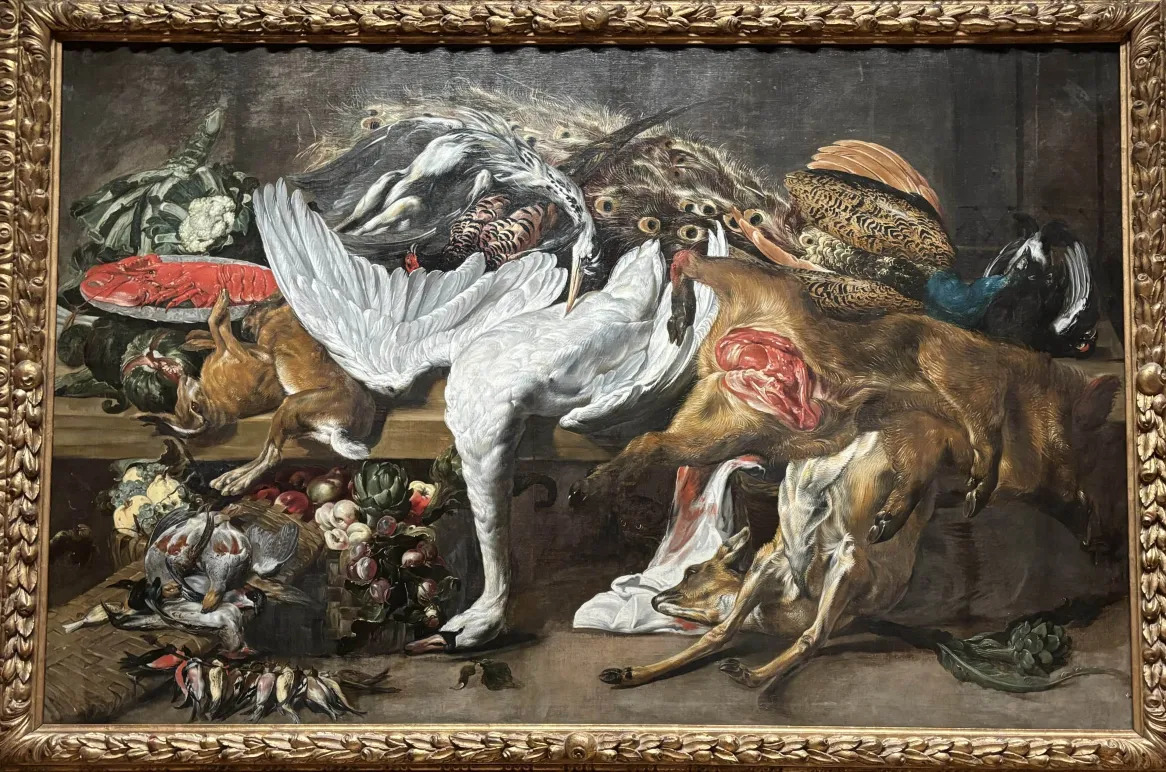
Sometime after 1635
I took this photo of Still Life with Dead Game at the Ringling Museum of Art in Sarasota, Florida. Whoever the painter was, the Ringling suggests they were likely a disciple of Frans Snyders, for whom animals— alive and dead— were common subject matter.
Still Life with Dead Game is the kind of painting you might see alluded to in a psychological horror or an Italian satire. Only when repeated, only too late, does the symbolism click. On return to the dusty banquet hall, when maggots have burrowed through the soft flesh of the boar before any people could get the chance; in the second-act nightmare, when animal carcasses become human or diners become animal; on the rewatch, when the painting in the hallway speaks to you. Here is where the hero should have turned back. Here is what awaits them when they press on.
In the time it has taken the Earth to blink, the painter and anyone who might have known them personally have died. Thus we are seeing this work with fresh eyes even now. To the painter’s client, this image depicted the height of hunter’s skill and aristocratic taste. To modern viewers— or, perhaps more accurately, to me— this is a picture of monstrous excess. It is cruelty for sport, an arrow in the heart of innocence. The body of a mute swan sprawls helplessly like a fallen angel. Baleful doe’s eyes beseech the viewer for help; poor, dumb, gentle thing doesn’t even know it’s dead yet. Little birds that once fluttered and tittered about a wood are frozen, silent, a chorus of forgotten bells. Still Life with Dead Game embodies consumption at its logical conclusion: all-devouring, having just to have. How surreal I would have found it to paint these once-creatures in real time; to look up from the canvas and see the rot setting in.
⋅•⋅⊰∙∘☽༓☾∘∙⊱⋅•⋅